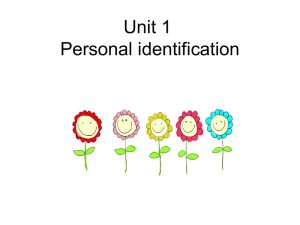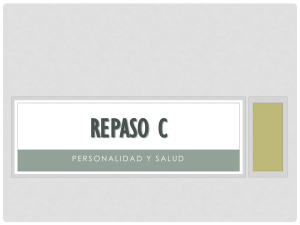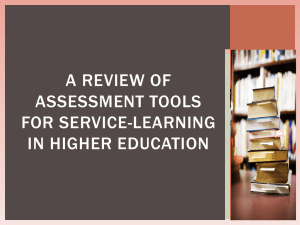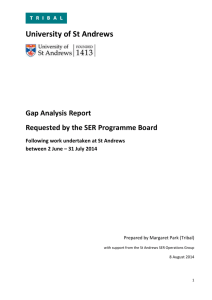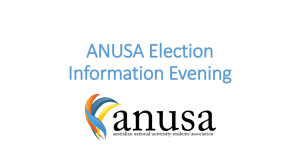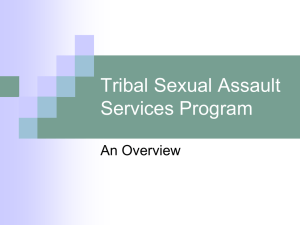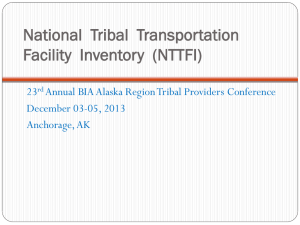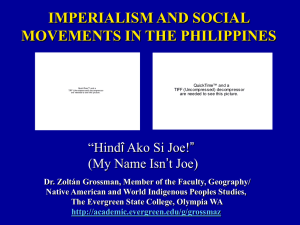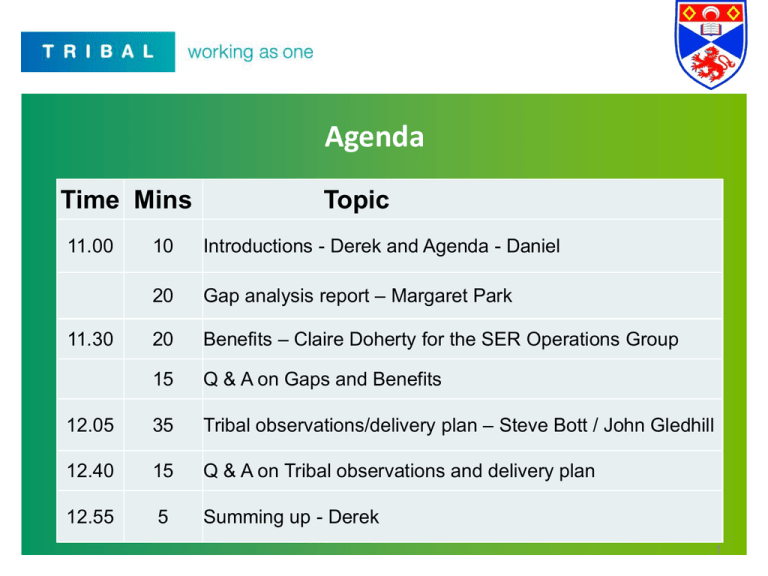
Agenda
Time Mins
11.00
Topic
10
Introductions - Derek and Agenda - Daniel
20
Gap analysis report – Margaret Park
20
Benefits – Claire Doherty for the SER Operations Group
15
Q & A on Gaps and Benefits
12.05
35
Tribal observations/delivery plan – Steve Bott / John Gledhill
12.40
15
Q & A on Tribal observations and delivery plan
12.55
5
Summing up - Derek
11.30
1
University of St Andrews
SER
Universities Scotland Circular
on the provision of
online PGT information
The Proctor
14 August 2014
College Gate, St Andrews
2
Requirement for online PGT information
By spring 2015, we need to have a functional and rich online
environment to provide information about our Postgraduate
Taught courses.
The audience is both UK and international potential students
as well as our statutory customers.
In some ways this is a similar requirement to the statutory
Undergraduate Key Information Set (KIS) but without the
requirement to collect raw assessment or teaching and
learning data.
Proposal for development
There was no ITS investment in 2013 during SER for PGT
students although it was recognised that the current online
Course Search facility was sub-standard for this cohort. In
addition, a decision was taken not to develop further over the
summer of 2014.
Now that the work on the summer 2014 “burning platforms” is
drawing to a close, we suggest that the Advisory Board look at
the requirements in the USS Circular and plan how best to
satisfy them in the short- and long-term.
Development work should be finished by 31 December 2014.
University of St Andrews
SER
Highlights from
Gap analysis report
Margaret Park (Tribal)
14 August 2014
College Gate, St Andrews
5
The purpose of the gap analysis
Tribal was asked by the SER Programme Board in
May 2014 to conduct a gap analysis of the capability
of SITS software to deliver the requirements
collected in 2013.
6
When and where
The gap analysis was conducted on site
at St Andrews in June and July 2014. Lean Central
was the venue throughout the summer.
The analysis was done in partnership with St Andrews
operational staff working alongside Margaret Park
(Tribal).
The SER project documentation collected in 2013
was compared to present requirements as discussed
with workshop attendees from Schools and Units.
7
Not in scope of the gap analysis
The gap analysis did not examine the skills
capability of St Andrews to deliver user interface
design (ie, “look and feel”).
Requirements for tailoring or re-skinning using Java,
for example, would need to be analysed separately
by other means.
8
Gaps that were analysed –
SITS local configuration
A gap analysis was conducted looking at the SITS
configuration at St Andrews compared to what is
needed for SITS product functionality as required by
the individual projects.
SITS upgrades have been maintained at St Andrews
and the current version of the software (8.7.0) with
plans to upgrade in November 2014 is sufficient to
deliver the proposed SITS solutions.
9
Gaps that were analysed –
Local SITS skills
A gap analysis was conducted looking at the SITS
skills currently available at St Andrews to develop
and maintain the proposed SITS solutions.
The analysis found that there is an insufficient
volume and, in some instances, expertise in the use
of local SITS skills to deliver the proposed SITS
solution in-house.
10
Training requirements
Training of St Andrews operational staff and ITS
developers would be required so that the legacy
of SER is sustainable in-house.
Tribal could provide on-site training as part of
the continuous improvement exercise envisioned
at St Andrews.
11
Gaps that were analysed –
Project requirements vs SITS software functionality
A gap analysis was conducted looking at the
previously approved SER projects in terms of the
requirements gathered in 2013 (reconfirmed in
summer of 2014) and comparing those to SITS
product functionality.
The analysis found that in all but a few known
instances the current SITS software can deliver the
approved project requirements in terms of
functionality.
12
The projects that were analysed
Only previously approved SER projects were truly
analysed for gaps between requirements and SITS
product functionality.
•
•
•
•
•
•
Advising
Paperless Admissions
Curriculum Approvals
Changes of Circumstance
Collaborations & Study Abroad database
Student Funding Administration
13
The projects that were analysed
For each project, the gap analysis identified where St
Andrews already has SITS software under licence to
provide for the project requirements or where
additional software components would need to be
licenced in order to deliver the proposed solutions.
In some cases it was found that St Andrews has had a
SITS component for some time but has not
implemented it fully or in sufficient detail to satisfy
the project requirements.
14
The Tribal proposed solutions –
SITS component gaps
The following table of SITS software components
summarises the gaps that would need bridging in order to
implement the Tribal proposed solutions:
15
Additional projects that were considered
In addition to the approved projects, additional
requirements that were directly related and shared by
projects were discussed although not analysed.
These included:
• Document Management
• Enterprise Service Desk (ESD) for case
management and enquiry management
• Interactive Workspaces (called Portals in e-Vision)
16
Document Manager
Almost all of the projects has the requirement for
collecting, storing and displaying documentation.
The University already has and uses the SITS
software component that enables these processes;
however, not all users follow the same business
model and there is no enterprise solution.
The SITS Document Manager solution is suitable for
all of the approved project requirements.
17
Enterprise Service Desk (ESD) –
For individual student enquiry resolution
ESD has a fully integrated interface with SITS and an
API that allows integration with other systems but it is
a separate software component currently used by 35
HE customers.
The software is component built which means it is as
customisable as required by local needs.
18
Enterprise Service Desk (ESD) –
for case management
Student Services is considering a case management
system and staff have recently had an onsite
demonstration by Ken Barrett (Tribal product expert)
of Tribal’s solution – Enterprise Service Desk (ESD).
19
End of part one
20
University of St Andrews
SER
Programme benefits and why a continued
Tribal partnership is beneficial
Claire Doherty
Prepared by the SER Operations Group
(Mohammad Asadullah, Claire Doherty, Daniel Farrell, Nadege
Minois and Kevin Thomson)
21
Rationale for a benefits model for SER
Early on in the SER programme, the Ops Group realised that we
did not have sufficient or robust information to make educated
guesses at the cost-saving benefits of all the SER projects.
So, instead of using the more conventional approach of
benefits categorisation such as finance/risk and
compliance/time saving, the SER Operations Group decided to
classify the benefits of the SER projects using the four SER
principles.
Our first task was to evaluate the importance of each principle
to apply a weighting factor if necessary. We chose 1 to mean
least important and 4 to mean most important.
SER Programme principles prioritised as benefits
Principle
Claire
Daniel
Kevin
Nadege
Total
Simplification
2
1
4
4
11
Visibility &
Transparency
3
3
2
1
9
e-Enablement
4
2
1
3
10
Adaptability &
Flexibility
1
4
3
2
10
Conclusion of straw poll
Although each attendee perceived the importance of each of
the four principles differently, the overall importance of each
principle is similar if the total scores are compared.
What each SER principle means to us in
terms of benefits
25
Simplification
•
•
•
•
•
•
•
•
•
•
•
•
Cyclical process review / continuous improvement
Process-led technology (do not strap/bolt in ITS)
Eliminate hoops
Increase service delivery / pace
Clarify cross-unit communications
Promote institutional change
Decrease cost / increase revenue
Improve customer service
Improve data quality
Expose problems
Increase creative capacity
Better management of resources
Visibility & Transparency
•
•
•
•
•
•
•
•
•
•
•
•
Hold fast to golden sources: minimise or eliminate local copies
Provide re-usable data for management information
Improve decision making and quality of decision
Provide more information for analysis
Clarify inter-departmental communications
Give better control for less fragmentation
Improve audit preparation / self-monitoring
Write better documentation including semantics and meta-data
Less shooting down of each other’s ideas
Encourage self-improvement
Improve data quality through aeration
Expose gaps / problems in systems and business processes
e-Enablement
• Reduce or minimise sutures between systems (ie, keep the bonnet
closed to end users)
• Encourage a move towards standards and structured data
• Paper-lite delivery to encourage the Green Agenda
• Mobile device and web promoted developments
• Easy and ready (24/7) access
• Commonality in design and features
• Sex up the image (do away with the clunky)
• Promote innovation and modernisation
• Permit customisation so the system caters for the user
• Be ahead of the game by listening to users/feedback
• Make staff feel part of the developments (eg, workspace designs)
Adaptability & Flexibility
•
•
•
•
•
•
•
•
•
•
Design for the repeatable / prototypical
Decrease cost of repair / maintenance
Ensure that process flows are delegable
Upgradable / maintainable while in circulation
Insist on reliability
Design for friendly interactions to encourage use
Responsive to external changes
Infrastructure needs to be recoverable and not staff dependent
Work towards individual customisation at surface
Always be scalable
Do the SER projects bring the identified
benefits? And are the SER principles
applicable to non-SER projects?
30
Case study 1: Paperless Admissions
Current characteristics to improve
Benefit achieved
Like-for-like replacement of un-reviewed process
e-Enablement
Written on complex platform (MMS)
Simplification
ITS developers and/or external contractors need to have
knowledge of local development platforms
Simplification
Not self-reporting or maintainable at non-ITS level
Transparency
Complex workflow with many variables
Simplification
Not a closed ecosystem so high maintenance
Simplification
Not easily adaptable to changes in requirements
Adaptability
Involves a lot of staff
Simplification
Work-around heavy
Transparency
Case study 2: Online Matriculation
Current characteristics to improve
E-enabled only to an extent
Work-around intrusion (SITS fields used for other
purposes)
Complex workflows
Not maintainable at local non-ITS level
Benefit achieved
e-Enablement
Flexibility
Simplification
Flexibility
Slow
Simplification
Replacement of paper-based process
E-enablement
Not self-explanatory at times
Transparency
Permits errors because of manual intervention
No up-to-date documentation
Adaptability
Transparency
“Time spent on…” – some bad institutional habits
•
•
•
•
•
•
•
•
•
…resolving individual student cases (going “round-the-houses”)
…researching full information on different systems
…answering enquiries without monitoring response rates
…manually correcting data between systems and in local files
…uploading / scanning documents that become invisible to most users
…maintaining system interfaces since we hold data in different places
…diagnosing system-to-system problems
…developing and testing but never going live in time
…finding / creating work-arounds (creative space to get the right answer
vs. quick fixes from lack of time/permission to be creative at work)
• …reporting (lack of e-enablement)
• …waiting on responses because of bottlenecks created by too few experts
Time saving benefits for staff
• Staff know that they can work quicker (save time), more
accurately (increase quality) and more creatively (be ahead of
the game).
• Staff know that if systems permitted, we can achieve greater
improvement without continually expanding staff complement.
• Staff want to benefit from the correlation, ie, by freeing up a
percentage of staff time and saving money, the University will
be in a position to re-invest. Re-investment needs to be in the
areas of professional development, self-improvement and the
continuous improvement of processes and services.
Why would a SITS user at St Andrews want
to argue for staying with Tribal?
35
The SITS benefits from a user’s perspective
• Tribal are market leaders in this area, providing SITS software
for more than 70% of the UK HE/FE sector, expanding in
Australia/NZ, South Africa, Ireland and North America
• A reputable and well-known 3rd party supplier so conversations
in statutory areas are easier (eg, HESA, UCAS)
• Nine of the Scottish HEIs are Tribal customers and there is a
strong user community and knowledge base among colleagues
in Scotland
• The product is well-supported (MySITS helpdesk & Forums)
• We already know SITS very well (first installation in 1999) and
we already have most of the technology required although it is
unutilised or not customised
• Range of experts and beginners among staff in Registry,
Finance, Student Services which means that up-skilling and
training are easier
• Well-established SITS Internal User Group for information
sharing and decision making
• We have a strong voice in the SITS user community – Scottish
and North England Regional User Group, Executive User Group,
various UK Working Groups and Special Interest Groups
• Reciprocal reputation for Tribal and St Andrews in a partnership
arrangement so that we maintain a competitive market edge
• Cost benefit if all student administration tools were to be built
on a single platform
• Cost benefit as ongoing Tribal consultancy would become less
of a dependency as staff become specialists and are able to
maintain systems and developments
End of presentation two
Q&A
39
University of St Andrews
SER
Delivering SER and beyond
Steve Bott (Tribal)
14 August 2014
Master’s Room
Hebdomadar’s Block
40
Where delivery of SER will take you
Leadership
Improved
performance
Informed decision
making
Performance
Measurement
KPIs
Continuous
Improvement
Better
processes
How Tribal can help you to deliver SER
• A fast-paced, pragmatic delivery style
• Uncomplicated, easy to use tools & techniques
• Clear and compelling case for change at each/every project stage
• Greater clarity within project communications
• Single template for benefits/project tracking to inform prioritisation and resource
planning decision so that everyone ‘sees’ the same information at every stage of a
project
• Project delivery supported by a transition towards a
Continuous Improvement culture
• Creates ‘belief’, builds team ethic and delivers an in-house problem-solving capability
• A revised governance structure
• Responsibility for delivery and decision-making placed closer to the work
Fast-paced, pragmatic delivery style
Agile Project Management
Option 1 – Iterative/Time driven
• Iterative methods evolve an entire set of deliverables over time, completing
them near the end of the project
• Project actions are resourced to meet fixed deadline
Contractual
Legislative
Academic calendar
To support dependent project that has fixed deadlines
Option 2 – Agile/Continuous improvement
• Agile methods complete small portions of the deliverables in each delivery
cycle (iteration)
• Project team complete actions as fast as possible within resource availability
and BAU cover
Greater clarity within project
communications
Project Delivery Template – Decision Making
Project Title:
1. Problem Statement
Nature of the problem to be addressed (as specific, succinct and quantifiable as possible)
Where it fits within the overall strategy for the process area
Where it fits in relation to other planned/in progress project actions
2. Prioritisation Statement
Why this project should be done next (as specific, succinct and quantifiable as possible)
Number of occurrences (per week); Students affected; Other dependencies (we can’t do that if we don’t do this);
Deadlines (and resulting required start date); availability of resource
3. Investment/ROI Statement
Investment affordability
ROI analysis
4. Projected Benefits
Cost
Process time saved (in Hours); Reduction in number of meetings; chasing information; waiting for decisions;
approvals hierarchy
Risk
Removal of single points of failure; Reputation; Reduction in IT systems utilised; Reduction in single points of
failure; More accurate data; Budgetary control
Quality
Reduction in end-to-end lead time; Staff morale; Happier students; Right First Time; Better decision making;
Visibility
Project Delivery Template – Project Management
Project Title:
5. Countermeasure and scope:
Brief description of the proposed solution
Where it fits within
6.
7.
8. Stakeholders, Risks & Potential Barriers
Any interaction/impacts with other projects or work
areas
Who else needs to be made aware of this work?
Projected Resource Required
Time in hours
Skills required
Split by work packages
9. Final Outcome (Reflection on how it went)
Link to previous Desired Outcome and Success Criteria
Unforeseen Results
Desired Outcome and Success Criteria
Brief description of what you are trying to achieve
How will you show the project has been successful?
Goals should be (SMART): Specific, measurable,
attainable, relevant and timely
Project Management
Project managers
• Often have difficulty in influencing the pace of delivery
• Seen as ‘outsiders’ by project team
• Have a different reporting line
Slows down communication
Different agendas and priorities
BAU will always take priority
• Role is passive
Project management accountability retained within project team
• Placed as close to the point of improvement/change as possible
• Actions are driven by personal/team needs, gains and benefits
• Role is active
Project delivery supported by
a transition towards a continuous
improvement culture
Programme planning meets pragmatism
Plan
From Here
Act
Do
Check
Continuous Improvement
To Here
Empowering the Continuous Improvement Process
Ownership
• I have permission and I can self-direct within agreed limits
• I have sufficient time and resources to do my job well
How it will
feel to your
staff
Purpose
• I am making a contribution to the programme overall
• I have a personal connection with the new solution
Mastery
• It satisfies my desire to get better at stuff
• I have the necessary skills and the confidence to use them
The goal is to keep momentum not kill it!
Skills set for Project Delivery
• Leadership ability
• Experience & Knowledge of the business processes
• Credibility
• Authority
• Good communication & presentation skills
• Good at building and maintaining relationships
• Passionate about the project benefits
• Able to handle ambiguity
• Supportive and available
Revised governance structure
ITS
Tribal
Careers
Alumni
SER
Projects
Admissions
Student
Services
Finance
Registry
ELT
PROGRAMME CONTROL GROUP
SER Steering Group
Ultimate
accountability
PROGRAMME PLANNING GROUP
Solving problems
SER Advisory Board
SER Ops Group
Change Unit / LEAN
Sharing
knowledge/ideas
Removing
excuses!
PROJECT DELIVERY GROUP
Project Manager
Process Owner
Responsible
SMEs
for project
Rules Owner
delivery
Administrator/Analyst
Project Champion
TECHNOLOGY GROUP
In-house – systems integration
In-house – SITS developers
Tribal – SITS developers
Skills enabled empowerment
Schools
Programme Governance
Agile, responsive , informed decision making
Delivering the Benefits
Project Governance, Roles & Responsibilities
Control Group (SER Steering Group)
Legend:
- Strategic vision, Risk, Budget , Scope
Collaborate
Direct Escalation
Planning Group (SER Advisory Board, etc.)
- Oversight, Facilitation, Guidance, Support, Direction,
Control, Training
Project Team
Delivery Group ( For each project)
Project Champion
- Project ownership, solution design &
project delivery
- Conduit between the project & SER community
- Advocacy within units to promote change
Project Manager
- Project planning & delivery; Meeting facilitation
- Helps project groups reach agreement on scope,
requirements, resources and delivery schedules
Business Team
Subject Matter Experts
- Provides business knowledge to the project
- Requirements finalisation & user stories
Business Rules
Rules owner
- Decides on process and business rules ensuring they are
fit for purpose
Business Analyst
Process owner
- Elicits process and system requirements and
transforms these to inform the product build
- Maintains supporting documentation
- Identifies and verifies system and process requirements
- Retains responsibility for proposed process and system
design and approves changes
Project Governance, Roles & Responsibilities
Control Group (SER Steering Group)
Legend:
- Strategic vision, Risk, Budget , Scope
Collaborate
Direct Escalation
Planning Group (SER Advisory Board, etc.)
- Oversight, Facilitation, Guidance, Support, Direction,
Control, Training
Project Team
Delivery Group ( For each project)
Project Champion
- Project ownership, solution design &
project delivery
- Ben Stride
Project Manager
- ??
Business Team
Subject Matter Experts
- Marie-Noel Earley
- Julie Ramsay
- Admissions Officers x 3
Business Analyst
- Claire Doherty
Business Rules
Rules owner
- Alison Sandeman
- IT Developer
Process owner
- Becky Ballantyne
Proposed delivery plan
Suggested Delivery Plan – more resource earlier on
Sept
2014
Oct 2014
Feb 2015
Aug 2016
Interactive Workspace
Enterprise Service Desk (ESD)
?
Tranche 1
Advising
Project modules delivery sequencing
Contingency
T2
Curriculum
Approvals
Pilot Projects
Learning informs remainder of
SER project delivery
Changes of
Circumstance
Project modules delivery sequencing
Contingency
Tranche 3
SER Projects
CSA
Benefits Realised
Paperless
Admissions
Scholarships &
Funding
Project modules delivery sequencing
Contingency
Project modules delivery sequencing
Contingency
Enterprise Service Desk (ESD(
Interactive Workspace
Interactive Workspace
?
Releases
capacity to
Enterprise Service Desk (ESD)
Quick
Wins
Risks and requirements for delivering
culture changes for SER and beyond
Culture change – Key risks
• SER scope and purpose is still disconnected even after three iterations
• Disconnect between what project teams think they are delivering and what the Steering Group is
expecting of them
• Chronic shortage of dedicated project resource
• BAU consumed project resource in previous SER iterations
• Individual Project teams are not clearly defined/constant/consistent
• Complex project review and prioritisation procedures
•
•
•
•
•
Too many levels of authority – different Boards, Groups etc
High numbers of interested parties – endless papers and reports that no-one has time to read
Decisions not being made by fact holders
Slows down decision making process
Lack of consistency in approvals process and decisions made
• We share knowledge but we don’t act on it or know what to do with it
Culture change – Key dependent actions
• SER purpose and vision need to be restated
• St Andrews needs a clear strategic vision – understood by all
• Single unified message from the top (ie, the Steering Group) to enable project teams to have clarity of
their objectives
• Visible support for SER through your own behaviours – informal ‘go-see’
• SER projects must be adequately resourced to meet planned deadlines
• Ring fenced SER resource not Business as usual must come first
• SER must interact effectively with MIG and web development projects to
ensure a cohesive outcome across all three initiatives
• Meetings need to be outcome driven and as brief as possible
•
•
•
•
•
•
Meetings must have a clear purpose, an agenda and recorded minutes (with actions and owners)
First agenda item should be ‘what I’ve achieved since the last meeting’
Ask – ‘who needs to attend/can we make a decision without them?’
Everyone required attends or sends a nominated deputy authorised to make decisions
Everyone attends on-time and are prepared and ready to contribute
Meetings should finish on-time (or early!)
Key requirements for Continuous Improvement
• Provide the vision and strategic direction that people can
depend upon and work toward
• Ensure messages and guidance are consistent and
re-enforced by your own behaviours
• Be inclusive and collaborative and build teams
• Set clear objectives and challenge ways of thinking
then………….
TRUST YOUR COLLEAGUES TO DELIVER!!
Building Teams, Trust & Ownership
Learn how to give people what they want
instead of what you want to give them!
A final thought…
Don’t underestimate
the influence
you have
on others!
End of presentation three
Q&A
66



